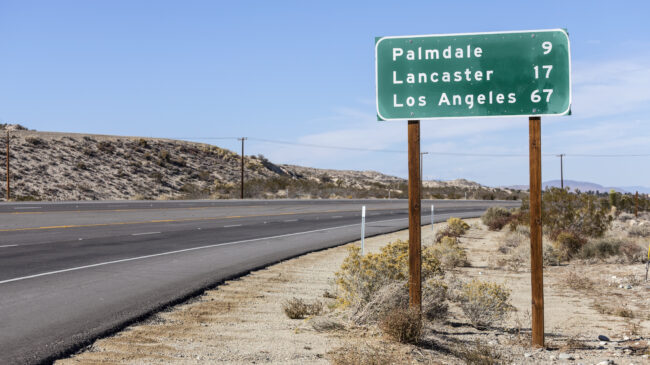California has some of the strictest greenhouse gas emissions rules in the country. By 2045, the state aims to reduce greenhouse emissions to 85% below 1990 levels. Since transportation is responsible for about 40% of all emissions, that sector would have to make significant reductions to meet these requirements.
State leaders have envisioned growth in alternative fuel vehicles, such as electric and hydrogen cars, playing an essential role in this shift. However, the California Legislative Analyst’s Office (LAO) recently published a report examining the state’s policies needed to reduce transportation emissions, how these policies would reduce transportation funding, and how California might solve the problems. The LAO report is a worrying read for state leaders and drivers.
Transitioning from a vehicle fleet powered by internal combustion engines to alternative sources will dramatically reduce roadway funding. The state’s 57.9-cent per gallon fuel tax provides more than half of California’s surface transportation funding. LAO forecasts gas tax revenues would decline by almost $6 billion, or 64%, over the next 10 years if California continues chasing its emission targets. In that scenario, California’s transportation revenue would decrease by 31%.
As a result, funding for some Caltrans programs would drop dramatically. LAO forecasts that highway maintenance and rehabilitation would be hit hard, declining by $1.5 billion, or 26%, over the decade. California already ranks poorly— 46th out of 50 states in rural Interstate pavement condition and 47th in urban Interstate condition—according to the Reason Annual Highway Report’s examination of every state’s road system. Unless California improves its efficiency in repairing pavement, drivers could be looking at rougher roads and even more potholes.
So, what is the state considering? California could increase its state gas taxes, which are already among the highest in the nation. But to viably make up for the funding loss forecast by LAO, the updated state gas tax would need to be indexed to both inflation and the improved fuel efficiency of vehicles on the road, which would be extremely unpopular with drivers and potentially hurt the state economy. A higher and higher gas tax burden would disproportionately fall on drivers of older, less fuel-efficient vehicles, who tend to be lower income.
The state could consider increasing its existing annual vehicle fees, such as license and registration fees. But again, these state fees are already high, and it would take an astronomical increase that many low- and middle-income families would struggle to pay if the state was looking to fully replace the gas tax money projected to be lost.
One part of the state’s plan to replace gas tax money is to charge fees on battery-electric or hydrogen fuel cell vehicles. But that’s unlikely to make up the difference since the average driver of a light-duty vehicle pays $280 per year in gas taxes, but the average fee for a zero-emission vehicle is $110.
Some groups may call for funding transportation projects out of the general fund. But transportation would have to compete with other policy areas, like education, which is constitutionally guaranteed funding and likely to continue to be prioritized ahead of roads.
Shifting to general fund spending would also obliterate the users-pay/users-benefit principle. The users of roads should be the ones who pay for them. And the money they pay in taxes and tolls should be used to maintain the roads they drive on.
In the future, the best option to fund California’s roads is likely a road charge. California has already conducted five pilot programs to test the feasibility of road charges as a replacement for gas taxes. All of the programs found road charges workable. Other states, including Oregon and Utah, are implementing permanent road charge programs.
The California pilots examined potential road charge challenges. One is whether rural drivers would be penalized. However, the pilot programs found that rural drivers tend to pay less in mileage fees than in fuel taxes because they often drive large trucks and older vehicles that use more fuel. Another major concern is some drivers understandably worry about privacy issues related to mileage fees. However, there are a variety of low-tech and private-sector options that exist to prevent the sharing of unwanted information with the government.
California’s emissions goals are likely unattainable. But even if they’re modified, the state’s transportation funding system must be fixed. California’s roads are in poor condition, and the gas tax is unsustainable. Policymakers should replace the gas tax with road charges dedicated to maintaining and repairing roads and bridges.
A version of this column first appeared in the Orange County Register.

